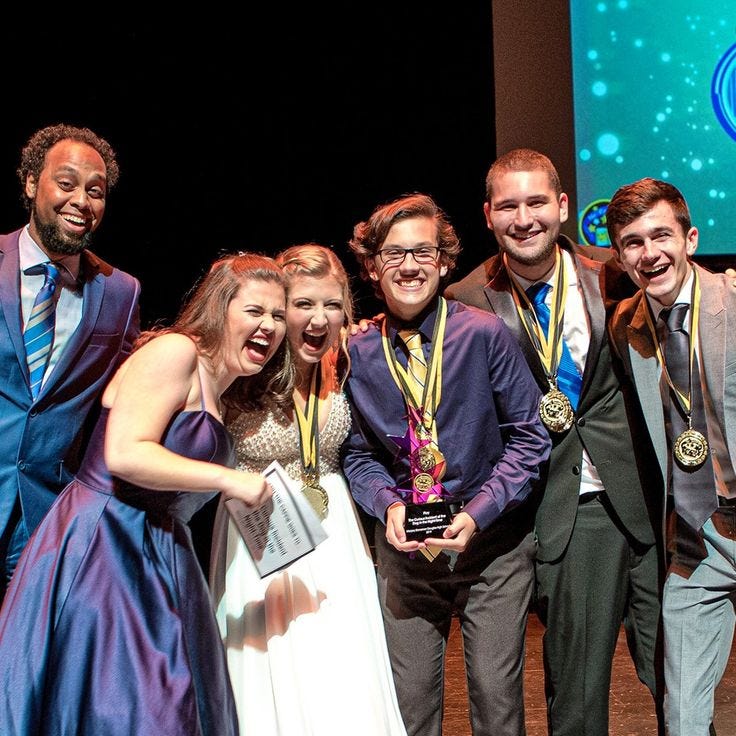Pitch to Prosper: How to Build a Winning Pitch Deck That Attracts Awards and Investors in 2025
Picture this: Alex, a scrappy entrepreneur with a big dream, is pacing their tiny St. Louis apartment in 2025, tweaking slides for a make-or-break moment. This isn’t just any PowerPoint — it’s their ticket to landing investors and snagging the Global Impact Award (GIA), a game-changer from Washington University’s Skandalaris Center that celebrates startups making the world better. A pitch deck isn’t just a stack of slides; it’s your story, your passion, and your shot at turning heads. In a world where business ideas are a dime a dozen, Alex’s deck needs to do double duty: woo venture capitalists and win award judges who value global impact. Join me as we follow Alex’s journey, unpacking how to craft a deck that doesn’t just raise cash but earns applause in 2025.

The State of Pitching in 2025
Today, pitch decks are more than bullet points — they’re cinematic experiences. Tools like Canva and Pitch.com let entrepreneurs like Alex create interactive slides with animations that pop, a far cry from the static PDFs of a decade ago. A 2025 Visible.vc study says 78% of funded startups used dynamic visuals, up from 52% in 2023. But it’s not all smooth sailing — Focused Chaos reports 60% of decks flop because they drown in data or miss the mark on storytelling. Back in 2008, Airbnb’s simple deck nabbed $600K by nailing market size; now, investors want sustainability metrics, and awards like the GIA demand proof of world-changing impact. Alex, scrolling through trends on their phone, sees bold colors and AI-driven designs ruling — but knows heart matters most.
1. Why a Pitch Deck Still Matters
Alex learned fast: In the chaotic business world of 2025, a killer pitch deck is your megaphone. Y Combinator stats show a great deck boosts funding odds by 40%. And awards? Winning the GIA, with its $75K prize and global spotlight, can skyrocket your business’s online presence, drawing investors through media buzz and university networks.
Take Renewal Mill, a startup that turned food waste into flour and won big (inspired by similar award champs). Their deck blended purpose and profit, landing cash and accolades. Alex, scribbling notes, realizes a deck isn’t just about money — it’s about building a legacy.
2. Award-Worthy vs. Investor-Ready: The Balancing Act
As Alex hones their deck, they spot the challenge. Investors want numbers — ROI, scalability. Awards like the GIA crave stories that inspire, emphasizing interdisciplinary impact. Both need clarity and traction, but the flavors differ.
Think of it like cooking: Investors want a spreadsheet sandwich — data-heavy, practical. GIA judges want a story soufflé — light, impactful, visionary. Alex’s trick? A deck that serves both: financials for VCs, world-changing vision for awards. The risk? Diluting the message. Testing drafts with mentors helps Alex nail the balance.
3. Building Blocks of a Knockout Pitch Deck
Alex’s deck takes shape, slide by slide, like a story unfolding. Here’s what they include:
- The Hook: “1.3 billion tons of food wasted yearly — our app turns scraps into meals.” It grabs hearts and heads.
- Problem: Hunger stats from the UN, told with urgency, like a call to arms.
- Solution: A clear, clever fix — think upcycled food tech, inspired by Renewal Mill.
- Market Opportunity: A $500B sustainability market, shown in a simple pie chart.
- Business Model: Subscription revenue, laid out so investors see dollar signs.
- Impact & Innovation: For GIA, Alex highlights eco-friendly differentiation, tying to the award’s unique value of fostering global change.
- Traction: 10K beta users, a client quote — proof it’s working.
- Team: Alex’s crew, with bios that scream “we’ve got this.”
- Call-to-Action: “Join our $500K raise to feed the world” — bold for investors, inspiring for award judges.
4. Storytelling and Design: Make It Stick

Alex knows a deck needs soul. They weave a narrative: The entrepreneur as a hero fighting waste, winning with tech. Visuals? Clean, earthy tones — think forest greens — paired with bold fonts, per 2025 trends. It’s like a movie trailer: data (30% ROI) meets stories (a farmer’s testimonial).
Design tips: Keep slides uncluttered, use sans-serif fonts, and avoid Comic Sans (yep, still a no-no). Uber’s 2008 deck, with its minimalist vibe, raised $200K — Alex takes notes.
5. Pitfalls to Dodge
Alex sidesteps rookie mistakes. Too much data? It’s a snooze-fest — Wezom’s 2025 study says 45% of decks fail here. Ignoring GIA’s focus on impact? Instant rejection. Generic slides? Alex adds personal flair, avoiding the “seen it before” trap that sinks many entrepreneurs.
6. Customizing for 2025 Audiences
Alex does their homework: GIA wants proof of concept and equity alignment; investors, per Crunchbase, crave exit strategies. They craft two decks — one interactive for VCs via AI tools like Pitch.com, another story-rich for awards.
Looking ahead, AR decks could let judges “walk” through your business by 2030, per Superside. Alex experiments with AI builders, boosting outreach with tailored slides.
7. Beyond the Slides: Owning the Room
A deck’s only half the game. Alex rehearses, nailing confidence — FI.co says presence seals deals. Post-award, GIA winners get media buzz, amplifying online reach. Networking with judges and investors? Alex’s coffee chats turn into mentorships.
What’s Next for Pitch Decks?
By 2030, VR decks might let investors “test” your product. AI could predict what VCs love. For entrepreneurs, this means bolder business pitches — but ethical tech use is key to avoid soulless automation.
Wrapping It Up
Alex’s deck lands the GIA, pocketing $75K and investor nods, their business now a beacon of impact. The secret? A deck that blends data, story, and sleek design. So, grab your laptop, channel Alex, and craft a pitch that doesn’t just fund your dream — it makes the world take notice.
Comments
Post a Comment